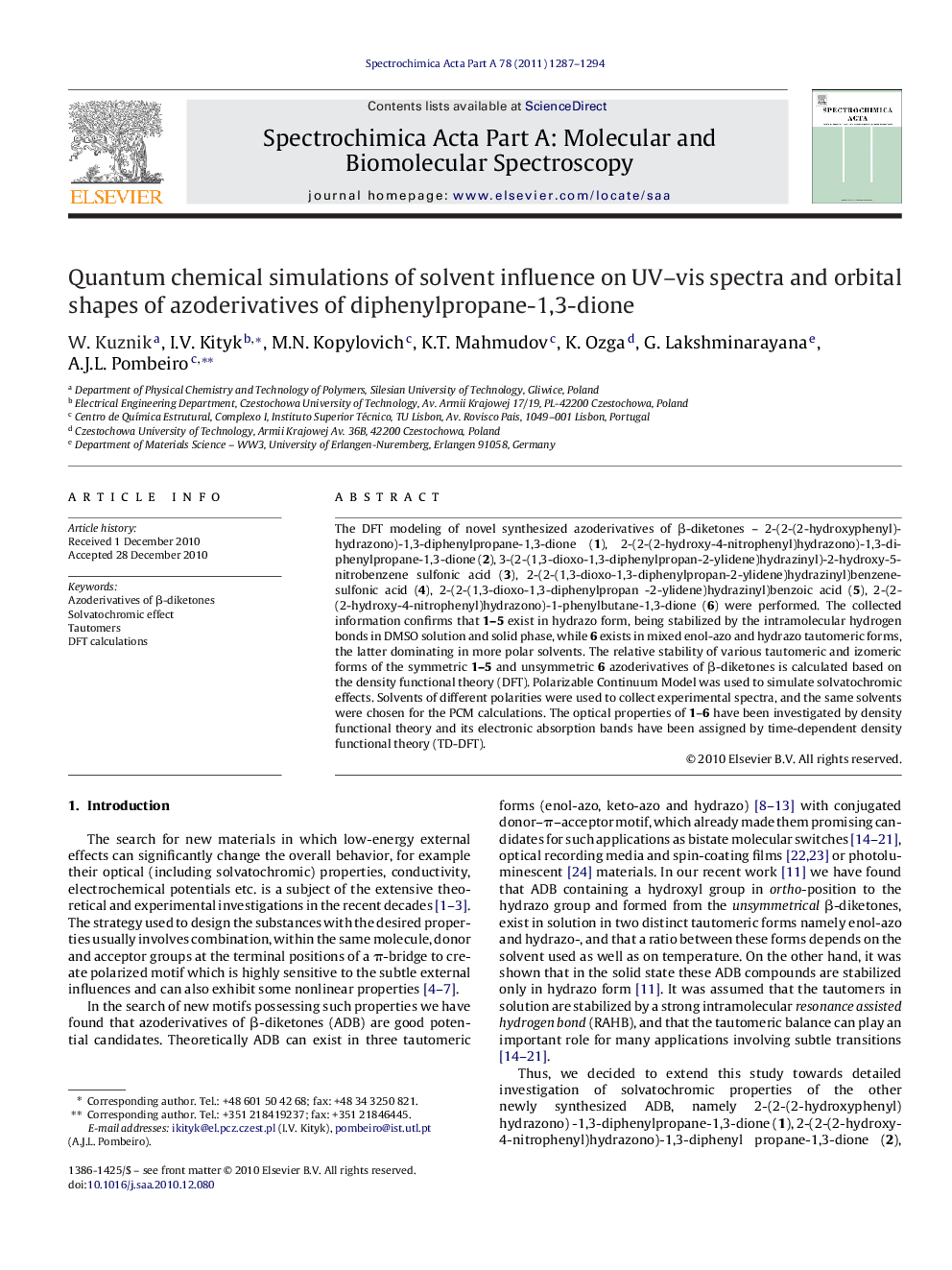| Article ID | Journal | Published Year | Pages | File Type |
|---|---|---|---|---|
| 1231698 | Spectrochimica Acta Part A: Molecular and Biomolecular Spectroscopy | 2011 | 8 Pages |
The DFT modeling of novel synthesized azoderivatives of β-diketones – 2-(2-(2-hydroxyphenyl)hydrazono)-1,3-diphenylpropane-1,3-dione (1), 2-(2-(2-hydroxy-4-nitrophenyl)hydrazono)-1,3-diphenylpropane-1,3-dione (2), 3-(2-(1,3-dioxo-1,3-diphenylpropan-2-ylidene)hydrazinyl)-2-hydroxy-5-nitrobenzene sulfonic acid (3), 2-(2-(1,3-dioxo-1,3-diphenylpropan-2-ylidene)hydrazinyl)benzenesulfonic acid (4), 2-(2-(1,3-dioxo-1,3-diphenylpropan -2-ylidene)hydrazinyl)benzoic acid (5), 2-(2-(2-hydroxy-4-nitrophenyl)hydrazono)-1-phenylbutane-1,3-dione (6) were performed. The collected information confirms that 1–5 exist in hydrazo form, being stabilized by the intramolecular hydrogen bonds in DMSO solution and solid phase, while 6 exists in mixed enol-azo and hydrazo tautomeric forms, the latter dominating in more polar solvents. The relative stability of various tautomeric and izomeric forms of the symmetric 1–5 and unsymmetric 6 azoderivatives of β-diketones is calculated based on the density functional theory (DFT). Polarizable Continuum Model was used to simulate solvatochromic effects. Solvents of different polarities were used to collect experimental spectra, and the same solvents were chosen for the PCM calculations. The optical properties of 1–6 have been investigated by density functional theory and its electronic absorption bands have been assigned by time-dependent density functional theory (TD-DFT).
